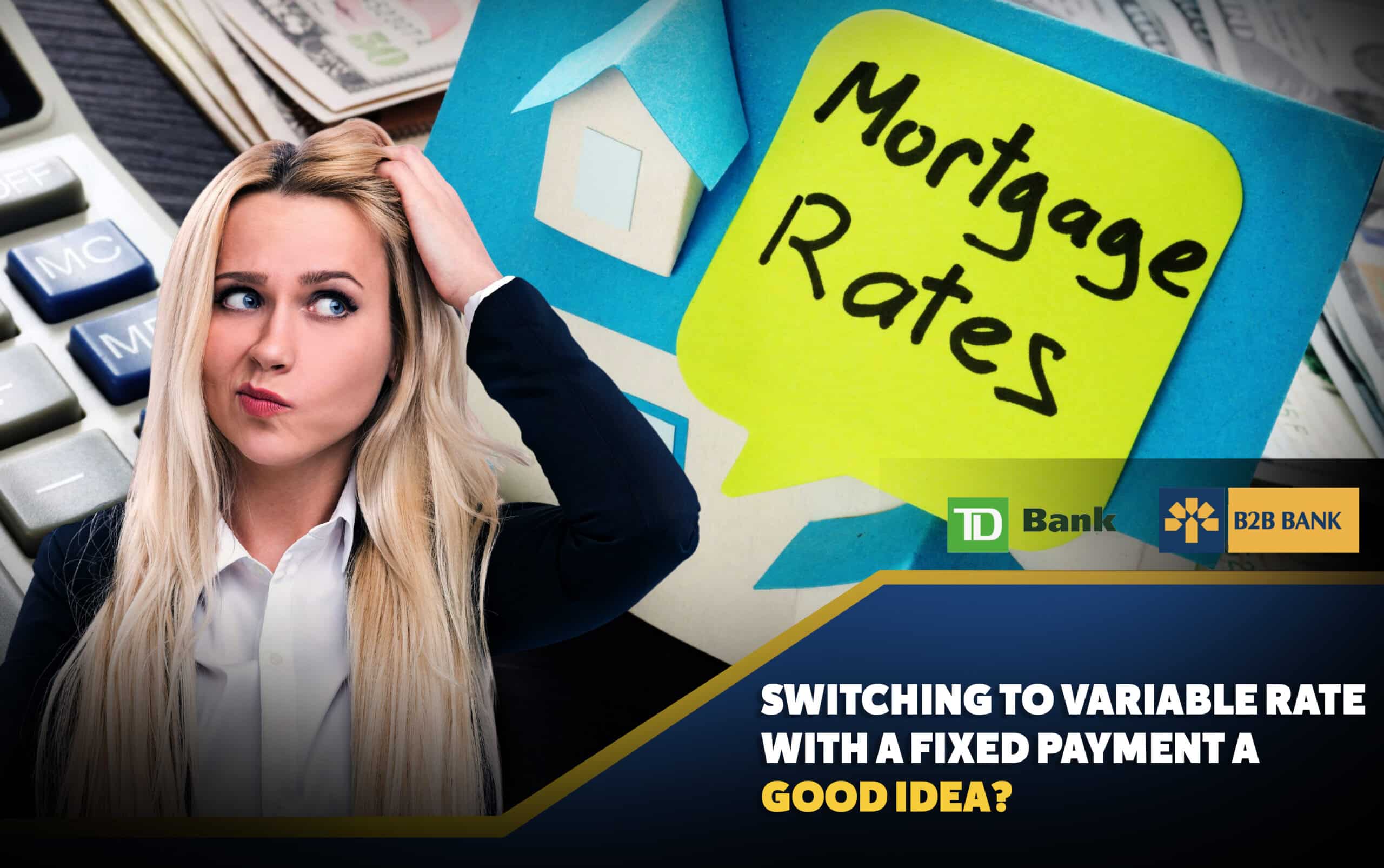Are you in a variable rate mortgage with a payment that fluctuates, and the last couple half point interest rate increases by the Bank of Canada has made you nervous? Maybe it’s time to switch to a variable rate mortgage with a fixed payment. In this article we look at the pros and cons of a variable rate mortgage with a payment that’s fixed.
The 2 Types of Variable Rate Mortgages
There are two types of variable-rate mortgages. One with a payment that stays the same. Another with a payment that changes. In this article we’re going to focus on the first one with a fixed payment.
The terms variable rate and adjustable rate have been used to describe those types of mortgages. In this article we’re going to avoid those terms because they can be confusing and instead use variable with a fixed payment and variable with a payment that changes. That way it’s nice and simple and there’s no confusion.
With a regular variable rate, when a lender’s prime rate changes, so does your mortgage payment. If prime rate goes down, your payment goes down. Conversely, if prime rate goes up, your payment goes up as well. Not so with variable rate mortgages with fixed payments.
With a variable rate mortgage with a fixed payment, your payment stays the same regardless of changes to a lender’s prime rate. There is one exception. If the prime rate goes so high that your mortgage payment no longer covers the interest alone of your mortgage payment, that’s when your payment would start to rise, but we’re nowhere close to that point right now.
Pros of a Variable Rate with a Fixed Payment
Variable rate mortgages with a fixed payment are especially attractive in rising interest rate environments.
If you like the idea of a variable rate mortgage, but you don’t like the idea of your mortgage payment constantly fluctuating, you can get the best of both worlds with this type of mortgage.
Variable rate mortgages typically come with a lower mortgage rate than fixed rate mortgages. Studies have found that those with variable rate mortgages come out ahead most of the time. By going with a fixed payment, you don’t have to worry about your mortgage payment changing as your lender’s prime rate changes. This makes it a lot easier to the rest of your budget, especially when inflation is at a 30 year high like we’re seeing, and your family budget is under pressure.
This also helps avoid us wanting to lock in our mortgage every time rates go up, when in fact, that may be the worst time to lock into a fixed rate mortgage.
You have the choice of making a higher mortgage payment if you want to. If you’d rather invest your money elsewhere because you can earn a higher return, you can do that. It’s completely up to you.
Cons of a Variable Rate with a Fixed Payment
The major con of variable rate mortgages with a fixed payment is that it can end up costing you a lot more mortgage interest in the long run. If prime rate goes up quite a bit during your mortgage term and you choose to keep your payment the same, you’ll end up paying a lot more interest over the life of your mortgage versus someone with a payment that changes. It could end up costing you thousands or tens of thousands more. However, like it said, if you’re able to invest the money elsewhere and earn more, maybe that’s not a bad thing.
There’s also the possibility of payment shock at renewal. Again, if rates went up a lot during your mortgage term and you didn’t make any extra payments, you could face a lot higher minimum mortgage payment at renewal. You could always refinance your mortgage to tower your payment, but you’d be delaying your plan of paying down your mortgage. You must ask yourself whether that’s something you want to do.
Which one is the right one for me?
If you’re interested in finding out the lenders that offer variable rate mortgages with a fixed payment and whether it’s right for you, reach out to us today. We’d be happy to review your current mortgage situation free of charge.



